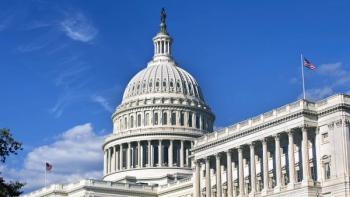
Expanded interest in advanced drug manufacturing and continuous production methods calls for more flexible production systems and regulatory policies.

Jill Wechsler is BioPharm International's Washington Editor, jillwechsler7@gmail.com.

Expanded interest in advanced drug manufacturing and continuous production methods calls for more flexible production systems and regulatory policies.

FDA recently published a final guidance for making post-approval manufacturing changes to drugs and biologics, the culmination of a long-running effort to facilitate improvements in medical product quality through the product life cycle.

The agency has published multiple guidance documents and policy initiatives for updating and advancing the clinical research process.

FDA expects to conduct only a small portion of scheduled facility visits in 2021 due to continued limitations on travel imposed by the COVID-19 pandemic.

FDA is threatening enforcement action against a clinical trial sponsor that has ignored requirements to post study results on the ClinicalTrials.gov website.

Combating COVID-19 is bolstering efforts to limit patent protections on innovative medicines and vaccines.

Updates to user fee programs that fund FDA operations are being finalized by industry stakeholders for approval by Congress.

The White House sent Congress a summary of “topline” funding requests that continue efforts to combat the coronavirus pandemic and to restore the nation’s economic health.

A FDA report cites multiple ongoing violations that undermine assurance of quality in products from this plant and the need for a continuing “pause” in production.

FDA has called a halt in production of vaccine drug substance and to quarantine all remaining product at the Bayview plant.

Patrizia Cavazzoni will become the director of the Center for Drug Evaluation and Research, and Janet Woodcock remains in limbo as the temporary head of FDA.

Even before Emergent disclosed that it had to discard 15 million doses of the J&J vaccine drug substance, FDA inspectors had uncovered multiple deficiencies and quality control issues.

Scrutiny of the vulnerability in the biopharmaceutical supply chain has increased pressure on FDA to renew site visits of domestic and foreign facilities.

The need for added revenues to fund billion-dollar infrastructure improvements has fueled challenges to industry pricing practices.

Is FDA approving too many new drugs and added indications too quickly based on surrogate endpoints that fail to pan out?

The Federal Trade Commission is launching a broad review of drug-company mergers, with an eye to examining how such actions can harm competition in the biopharmaceutical industry.

With no final nomination of FDA commissioner coming from the White House, concern has mounted among regulated industry and interested stakeholders that FDA operations and stature will suffer without a permanent commissioner able to articulate new policies and gain support for innovative programs.

Reviews of FDA initiatives and activities recapitulate efforts to assess and approve new drugs, generic drugs, and biologics and strategies for advancing new initiatives.

To prevent future production delays of critical products, the Biden administration is examining supply chain vulnerabilities for pharmaceutical ingredients as part of a longer-range consideration of products important to public health.

FDA issued a public statement and press release, along with a sharp warning letter rebuking AcelRx Pharmaceuticals for its messaging on painkiller Dsuvia.

Scientists and policy makers are looking more sharply at the lag in identifying and producing medicines to moderate early infections and to treat seriously ill patients.

The selection of a new FDA commissioner has become a contentious issue in Washington, as the White House delays a decision and interest groups line up behind competing candidates.

FDA puts applications on hold as the agency limits alternative oversight methods.

With Democrats controlling Congress and the White House, expectations are high that policy makers will revise certain coverage and payment policies.

The broader national strategy sets seven goals, some fairly general, such as building public trust, safely reopening schools and businesses, advancing racial and ethnic equity, and restoring US global leadership.

Since FDA authorization of two innovative mRNA vaccines to combat COVID-19 in late 2020, 30 million doses have been distributed, but only 4 million people were vaccinated in December 2020, and just 13 million have received shots so far.

As the Biden administration readies to take over the reigns of government, top administration officials continue to rush through new rules and decisions that appear to challenge the independence and effective operations of FDA.

The vetting and authorizing of important new therapies remained productive in 2020, despite the need to devote considerable resources to dealing with COVID-19 related approvals and policies.

The incoming administration faces key decisions on drug testing and access as well as vaccine distribution challenges.

President Trump signed the COVID-19 package, which appropriates $2.3 trillion to finance the federal government through September 2021 and provides support for individuals and entities suffering from the economic crisis wrought by the pandemic.